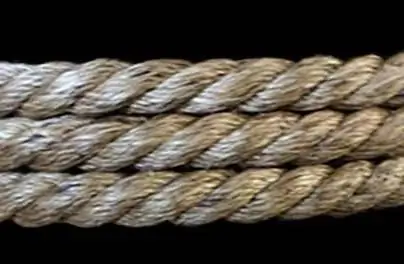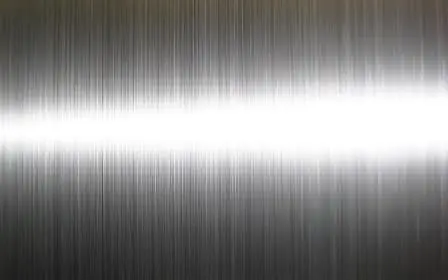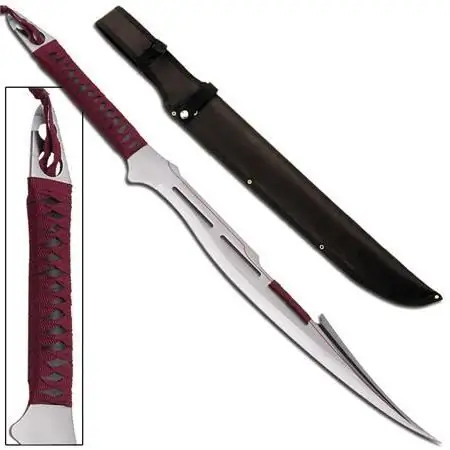2025 Author: Howard Calhoun | [email protected]. Last modified: 2025-01-24 13:10:30
Steel rope rejection standards are often violated by workers. And this causes undesirable consequences. So, for example, the operation of a heavily damaged sling can lead to an accident and injury (and possibly death) to people. On the other hand, if the value of signs of rejection of steel ropes was greatly exaggerated, then this will result in rather significant unreasonable expenses for the enterprise. This article will be useful to engineers and workers, as well as sailors who deal with cables. Knowledge of steel rope rejection standards will improve work efficiency and safety.

Basics
Inspection principles and steel rope rejection rates are specified in a special document numbered 12-97. To many engineers, this will seem strange, becauseusually state standards have been developed for such things. However, this is true. And this document establishes not only the standards for rejecting steel ropes, but also the procedure for their production and operation, installation and maintenance.
According to this manual, metal cables and ropes should be carefully inspected for damage and flaws once every ten days. In addition to periodic maintenance, products of this type are inspected without fail before use (this does not apply only to elevators and other systems in which the cables are hidden).
Cables that operate in especially dangerous conditions and under heavy loads, with a certain period must be tested using a flaw detector. However, such a device is quite expensive, and only highly qualified engineers who have special courses behind their backs can work with it.

Where are the cables most exposed to wear?
Years of experience and research into the patterns of wear of steel cables to identify places that are most prone to wear and destruction. These observations formed the basis of the standards for rejecting steel ropes of lifting structures. In the course of numerous experiments and experiments, it has been proven that the cables begin to lose their operational qualities and collapse at the points of attachment of the ends, at the ends (overlock), at the points of friction with fixed parts of the structure (guides, equalizing, and so on).

Rope Requirements
Steel rope rejection rates are only valid if they meet industry and production standards.
Cables that are used in rigging, cargo, traction and other work must have a quality certificate from the manufacturer of the appropriate sample. This document contains information about the tests carried out on the strength and wear resistance of steel ropes. It is for this reason that ropes that were produced abroad are practically not used anywhere in our country. Indeed, in Europe and the United States, completely different standards apply. Theoretically, this is possible, but if you intend to use foreign-made steel ropes, you must obtain documentary evidence of product quality compliance with domestic standards. Such a document is issued by the parent organization for standardization and certification.
If there is no documentation on the steel rope confirming compliance with quality standards, then such products cannot be used.
Cables and ropes come from factories to the final consumer in whole lots. For each such delivery, there must be a so-called passport. There cannot be steel ropes of different sizes in one batch.

What are the ways to detect marriage?
The most accessible, simple and cheap way to determine the rejection rate of steel rope slings is the visual method. An external examination carried out by an experienced specialist using a simpleauxiliary equipment will allow timely detection of critical damage to the cores of the ropes and take measures to prevent an emergency or accident.
The second most popular and effective method is the so-called instrumental method for establishing compliance with the rejection standards for steel rope slings. As studies and experimental work have shown, by the nature of the straightness and the violation of the geometric shape in the cross section of the cable, one can quite accurately predict its useful life. Not every engineer can do this kind of work. Here it is necessary to have a powerful mathematical apparatus and appropriate instrumental support. Currently, highly specialized software packages have appeared on the market that allow you to partially automate routine mathematical calculations. However, the cost of the license is very high and it is unlikely to be economically feasible to purchase.

Role of safety factor
This indicator is very important. And its value is numerically equal to the ratio of the breaking force to the cable tension index. In accordance with the requirements of the State Labor Protection Inspectorate, norms for the values of the strength factor for various ropes have been established. So, for ropes that do not experience significant loads during operation (light duty), this value should not fall below 5. For those ropes that work in difficult conditions and experience huge loads, the valuethe strength factor should not fall below 6. An intermediate type of cables is also distinguished, designed for operation in medium mode. The value of the strength factor of such ropes cannot be lower than 5, 5.
Checking the strength factor can be attributed to destructive quality control and rejection, if not of one individual steel rope, then of the whole batch. To carry out such tests, it is necessary to have sophisticated and expensive equipment available.
Determining the winding pitch of the rope
Such a parameter as the lay pitch of a cable or rope is very important when considering the issue of rejection. The fact is that the number of breaks in thin fibers, as a rule, is counted on a rope length equal to this pitch.
If there is no experience in carrying out such work, then difficulties may arise. Although in fact everything is quite simple. The pitch will depend on how many strands are in the rope. Further, on the surface of one of the strands, a mark is made with a marker or center punch. It remains only to count in one to the right or left the number of strands in the cable and put a second mark. The distance between the two marks will be equal to the lay pitch. And it is at this interval that it is necessary to count the number of breaks.

Waviness of ropes
This is a very important sign, and the steel rope rejection standards cannot be silent about it. During the active operation of the cable, when it is wound on the drum and unwound, residual distortions are formed in it. If the cable is not replaced in time, then thesedistortions grow, and dangerous destructive processes begin in the rope itself.
Therefore, it is important to replace the cable in time. Recommendations have been developed to prevent accidents at work. The cable must be replaced if the diameter of the section in the spiral area is greater than or equal to 1.08 of the nominal outer diameter of the cable.

Criteria for evaluating the degree of wear of steel cables
When deciding to continue using or decommissioning metal ropes, many factors are taken into account. Thus, the wear of steel cables is a multifactorial concept. The decision is influenced by the degree of mechanical wear on the surface, the nature of the destruction of the wire of the strand, the decrease in the cross-sectional area, the presence of foci of corrosion damage, and the change in the winding pitch. When making a decision, all of these factors should be taken into account.
Unconditional rejection standards for steel ropes of hoisting machines, elevators and other mechanisms
The cable is considered defective if the reduction in the cross section of the outer wires is forty percent or more. Moreover, the length of the active wear area is not taken into account. Such a cable may not show external signs of wear, however, it may break during stress.
In addition to the decrease in the cross-sectional area, an abnormal increase in it should also cause concern. The cause of such "bloating" is the swelling of the core. In accordance with the norm of rejection of steel ropes of cranes, the critical valueincrease in cross-sectional area is 7% of the nominal area.
The stretching of steel ropes is a natural process that occurs during the active operation of the cable. However, it should not exceed the established norm. This figure is 5%. Thus, if the test revealed an increase in the length of the cable by five percent or more, then the product is recognized as defective, despite the absence of visible signs of destruction. Moreover, the rejection rate for steel fine-stranded ropes does not differ from that for heavy-duty cables.
Special rejection rates
If a metal rope is used to propel vehicles with people or to transport potentially dangerous and dangerous goods (acids, straightened metal, and so on), then safety requirements, of course, are tightened, and the rejection rate is reduced exactly in twice. That is, if a rope with forty fiber breaks per step length is usually recognized as defective, then in this case a rope with 20 breaks is already removed from service.
Special techniques are also used when deciding on the rejection of ropes twisted from thick wire. The fact is that domestic enterprises for the production of steel ropes produce two types of products: from thin wire and from thicker wire. It is clear that the breaks of thick and thin rolled products cannot be equivalent. Therefore, when counting the number of thick wire breaks per strand pitch, one break in a thick wire is equivalent to 1.7 breaks in a thin one. The total amountdefects should not exceed 40.
How is the cable core condition assessed?
In accordance with the standards for rejecting steel ropes of elevators and other lifting and transport machines and mechanisms, in the absence of visible signs on the outer surface, the cable can be recognized as defective on the basis of damage to its core. For such an analysis, a special device is needed - a flaw detector.
If the total loss of the core wire section is more than 18%, then such a rope is considered defective.
Not every enterprise has a flaw detector and specialists with certain training. But the need to control the geometric parameters of the core does not always arise. In accordance with the requirements, this kind of control should be carried out only for cables that are subject to special strict safety requirements.
Recommended:
Qualities of a lawyer: personal and professional signs of a good lawyer, morality and communication skills

Representatives of the legal profession are subject to fairly high requirements by society. In many ways, they are associated with the personality of the specialist, as well as with his professionalism. In modern society, almost no sphere of human activity can do without legal support. It is the representatives of this profession that have to do a lot of paperwork, be able to resolve conflict situations, etc
Food stainless steel: GOST. How to identify food grade stainless steel? What is the difference between food stainless steel and technical stainless steel?

The article talks about grades of food grade stainless steel. Read how to distinguish food stainless steel from technical
Steel ropes - general definition and basic parameters

Depending on the operating conditions, steel ropes are divided into traction, reinforcing, lifting, cargo, towing, mine, bearing, etc. These products are widely used in many industries and utilities. Steel ropes are a load-bearing element of transport, road construction, lifting structures and machines. The quality of these devices ensures the safe use of all lifting mechanisms
Corrosion resistant steel. Steel grades: GOST. Stainless steel - price

Why metal materials break down. What are corrosion-resistant steels and alloys. Chemical composition and classification according to the type of stainless steel microstructure. Factors affecting pricing. Steel grade designation system (GOST requirements). Application area
440 steel - stainless steel. Steel 440: characteristics

Many people know 440 steel. It has established itself as a reliable, anti-corrosion, time-tested hard material, which is most often used for the manufacture of knives for various purposes. What is the secret of this alloy? What are its chemical, physical characteristics and applications?

